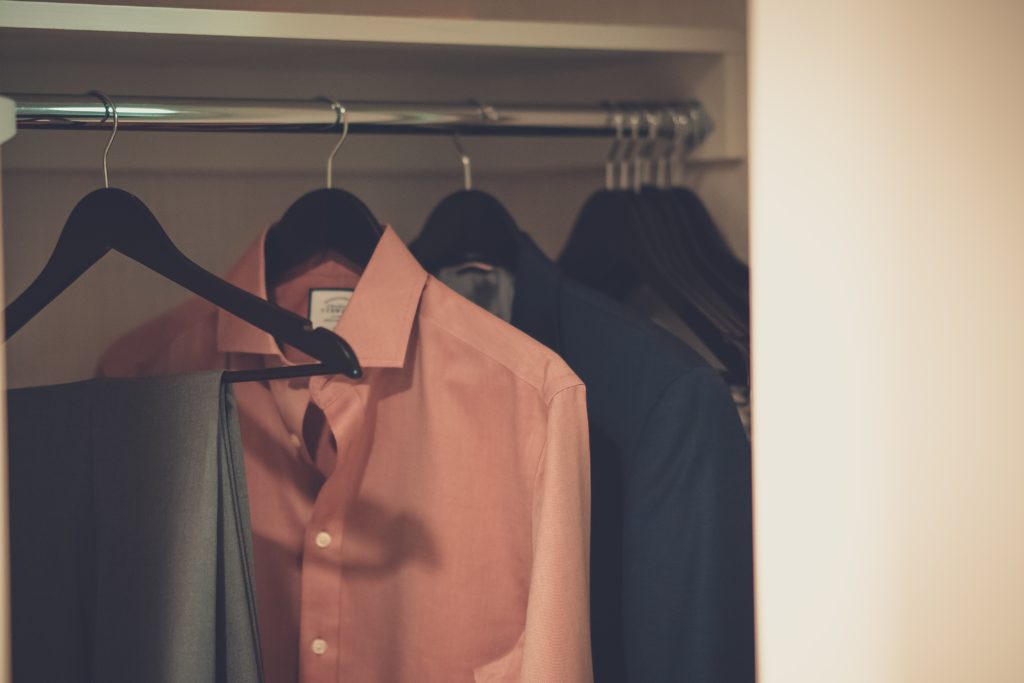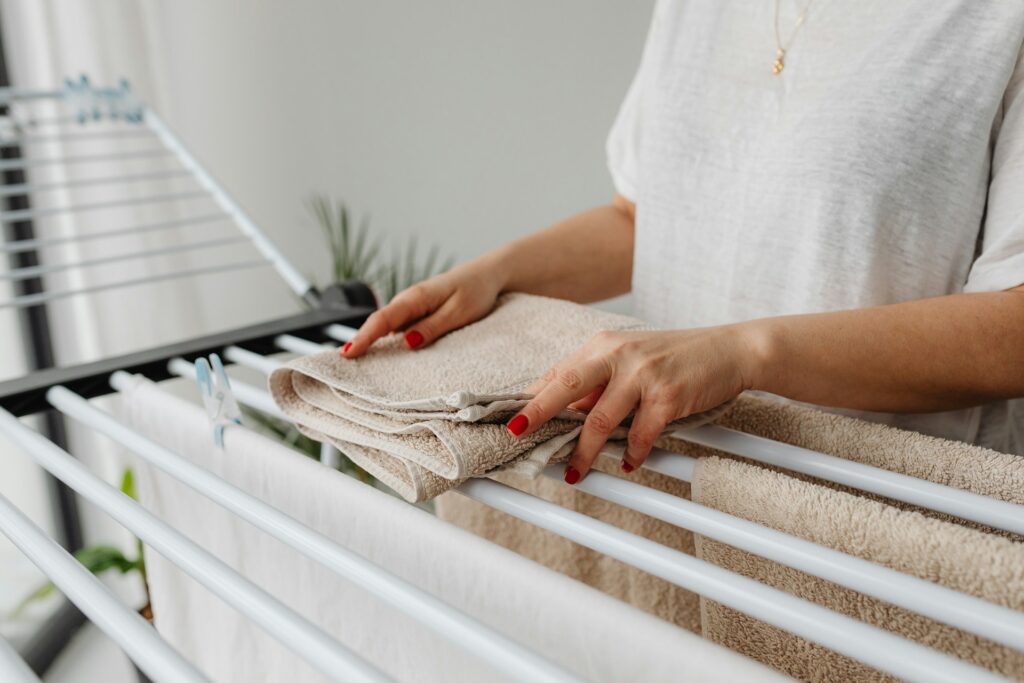In an era where fast fashion dominates the retail landscape, learning to care for and extend the life of your clothing has become both an economic necessity and an environmental imperative. The average person discards 70 pounds of clothing annually, yet with the right techniques, most garments can last years longer than their typical lifespan.
Whether it’s a pair of jeans that fit perfectly, a flattering shirt, an item with sentimental value, or that special occasion dress that never fails to impress, we all have treasured pieces in our wardrobes that deserve proper care and attention.
Smart Washing: The Foundation Of Clothing Longevity
The way you wash your clothes is the single most important factor in determining how long they’ll last. From water temperature to load size, every decision in your laundry routine either preserves or degrades your garments. Understanding the science behind effective washing can transform your approach to clothing care.
Mix Wisely, Wash Smarter
Contrary to popular belief, you don’t always need to separate your laundry into strict color categories. Using color-catching sheets or natural alternatives like white vinegar can prevent dye bleeding, allowing you to wash mixed loads safely. This approach not only saves time and energy but also reduces the frequency of washing individual items.
The 75% Rule
One of the most overlooked aspects of washing is load size. Fill your washing machine drum to only three-quarters capacity. This seemingly simple adjustment allows clothes to move freely, reducing friction and improving cleaning effectiveness. Overpacked machines create excessive agitation that breaks down fabric fibers prematurely and can leave clothes inadequately cleaned.
Read: The common laundry missteps you might be making

The Art Of Selective Washing
One of the most effective ways to extend clothing life is simply washing less frequently. This doesn’t mean wearing dirty clothes—it means being strategic about when washing is truly necessary and understanding how different fabrics respond to reduced washing cycles.
Embrace the 24-Hour Rule
Not every worn garment needs immediate washing. Fabrics naturally release odours when given time to breathe. Try hanging clothes in a well-ventilated area for 24 hours before deciding if they truly need laundering. This practice can extend garment life significantly while reducing water and energy consumption.
Understanding Fabric Needs
Different materials require different care frequencies. Wool naturally resists odours and can go weeks between washes, while synthetic fabrics may need more frequent cleaning due to their tendency to trap oils and bacteria. Learning your fabrics’ characteristics helps optimise your washing schedule.

Creative Revival Techniques
When clothes start to show their age, creative intervention can breathe new life into tired garments. These techniques transform worn or faded pieces into unique, personalised items while extending their usable life far beyond their original expiration date.
The Power of Natural Dyeing
When colors fade, consider natural dyeing methods using ingredients like turmeric, beetroot, or tea. These techniques not only refresh your clothes but also connect you to traditional textile practices. For more dramatic transformations, explore tie-dyeing, shibori, or other resist-dyeing techniques that can completely transform tired garments.
Visible Mending as Fashion
Embrace the Japanese art of sashiko or visible mending techniques that turn repairs into decorative elements. This approach transforms damaged clothing into unique, personalised pieces while celebrating the garment’s history rather than hiding its wear.

Storage Wisdom
How you store your clothes when they’re not being worn significantly impacts their longevity. Proper, appropriate storage techniques prevent unnecessary wear, maintain garment shape, and protect against environmental damage that can occur even when clothes are hanging in your closet.
Fold vs. Hang: The Science Behind the Choice
The decision to fold or hang clothes affects their longevity significantly. Knitted items, anything with stretch, and heavy garments should be folded to prevent stretching and misshaping. Reserve hanging for structured items like blazers, dresses, and wrinkle-prone fabrics. For folded items, the Marie Kondo method isn’t just about organisation—vertical folding reduces creasing and allows air circulation.
Climate Control
Store clothes in areas with stable temperature and humidity levels. Excessive moisture promotes mold and mildew, while very dry conditions can make natural fibres brittle. Cedar blocks or lavender sachets provide natural moth protection while adding a pleasant fragrance.
Maintenance Mastery
Beyond regular washing and storage, your clothes and washing equipment need ongoing maintenance to perform at their best. Small investments in upkeep can yield significant returns in garment longevity and appearance quality.
Machine Maintenance Equals Clothing Care
A clean washing machine is essential for clean clothes. Mineral buildup from hard water can deposit on fabric fibres, making them feel rough and appear dull. Monthly cleaning with white vinegar or specialised descaling products keeps your machine functioning optimally and your clothes looking their best.
The Economics of Quality Care
Investing time in proper clothing care pays dividends. Consider that the average person spends close to £900 annually on clothing. By extending garment life by just 50%, you could save hundreds of pounds yearly while reducing your environmental footprint.

Pest Prevention Strategies
Moths and other fabric-eating insects can cause hundreds of pounds worth of damage to your wardrobe in a remarkably short time. Prevention is far more effective and economical than dealing with an established infestation, making proactive pest management essential for clothing preservation.
Natural Moth Deterrents
Prevent moth damage through regular cleaning, proper storage, and natural deterrents. Cedar, lavender, rosemary, and cloves naturally repel moths without harsh chemicals. Vacuum storage areas regularly and inspect stored items periodically for early signs of infestation. That said, as the team at ThermoPest Moth Treatment recommend; “should your moth problem be severe or persistent, professional pest control services can provide targeted treatments that are more effective than home remedies, particularly for valuable or extensive wardrobes.”
Seasonal Rotation
Implement a seasonal clothing rotation system. Clean all items before storage, ensure they’re completely dry, and use breathable storage containers. This practice not only protects against pests but also helps you rediscover forgotten pieces in your wardrobe.

The Bigger Picture: Sustainability & Style
Caring for your clothes extends beyond personal benefit to encompass broader environmental and economic impacts. Understanding these connections helps frame clothing care as an act of conscious consumption and environmental stewardship.
Quality Over Quantity
The most sustainable approach to fashion is buying fewer, higher-quality pieces and caring for them properly. A well-made garment that lasts ten years has a far lower environmental impact than multiple cheap replacements.
Repair and Alteration Networks
Build relationships with local tailors, cobblers, and repair specialists. Many cities now have “repair cafes” where volunteers help fix clothing and other items. These communities support both sustainability and skill-sharing.
Mindful Consumption
Before purchasing new items, consider the cost-per-wear ratio. A £200 coat worn 100 times costs £2 per wear, while a £50 coat worn 10 times costs £5 per wear. This perspective helps justify investing in quality pieces and taking better care of what you own.
The Bottom Line
The intersection of proper clothing care, environmental consciousness, and personal style creates a more thoughtful approach to fashion. By implementing these strategies, you’re not just extending the life of your clothes—you’re participating in a more sustainable relationship with fashion that benefits both your wallet and the planet.





